- Home
- TV History
- Network Studios History
- Cameras
- Archives
- Viewseum
- About / Comments
Skip to content
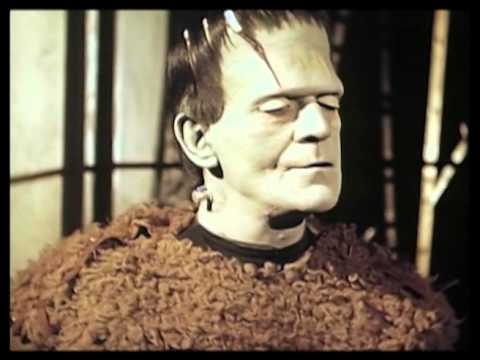



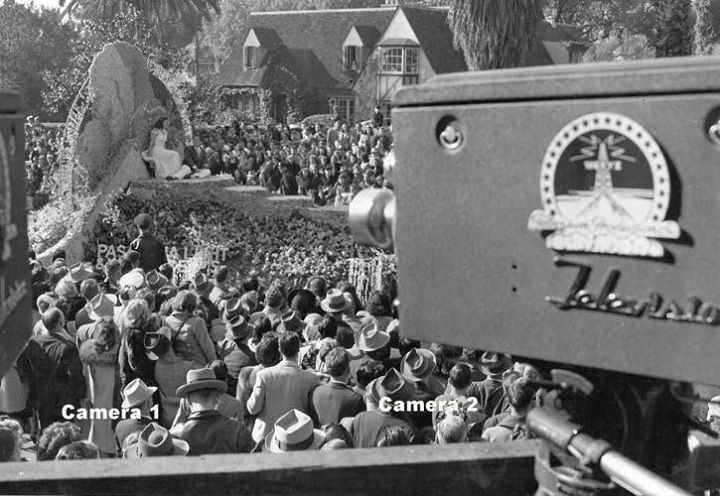

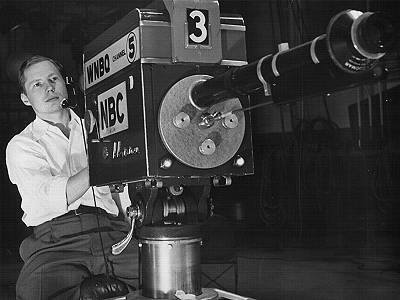

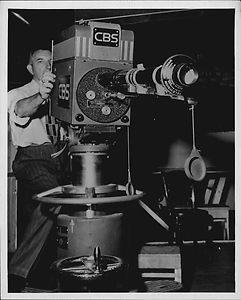

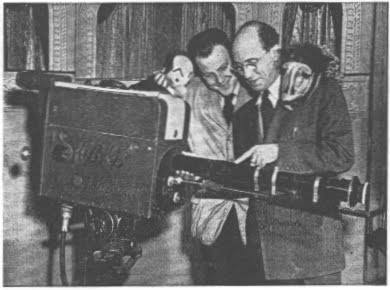

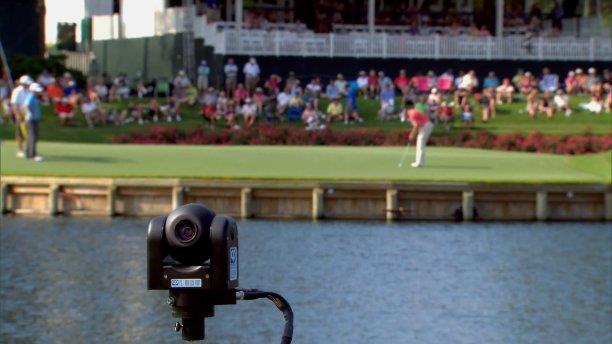

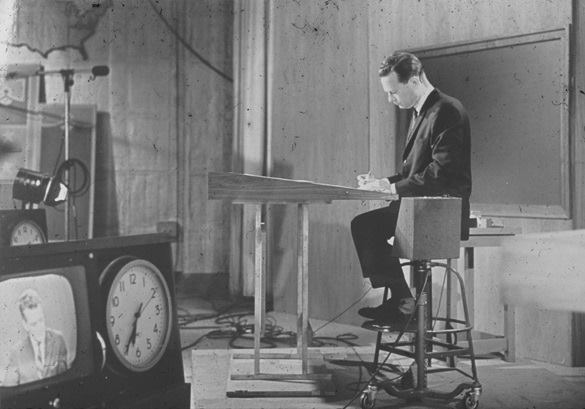

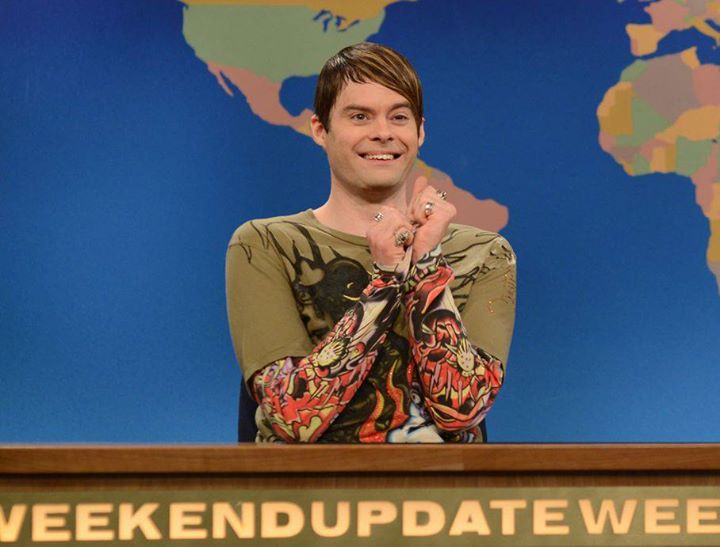

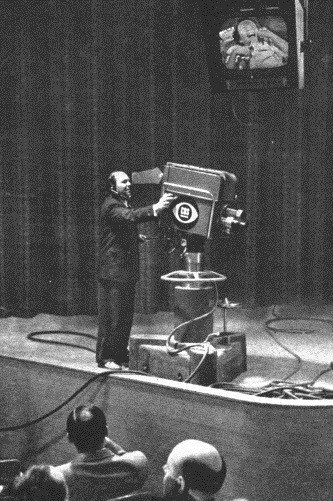

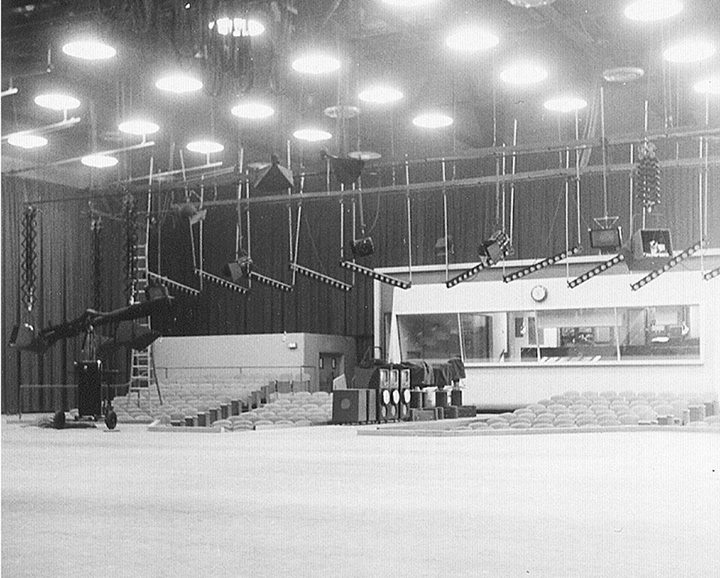

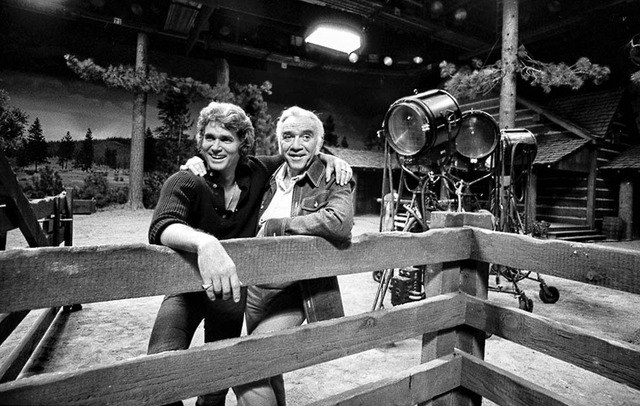

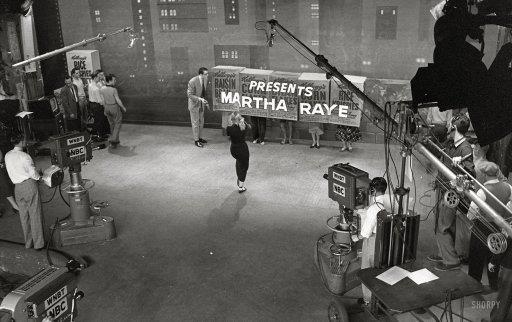

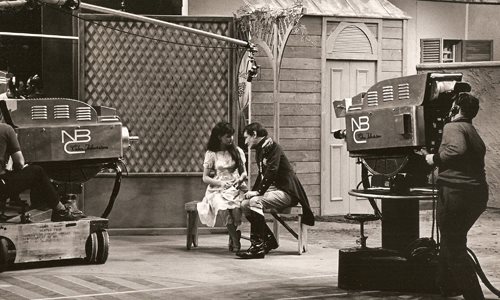

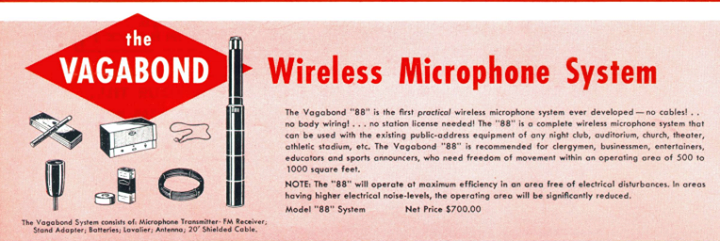

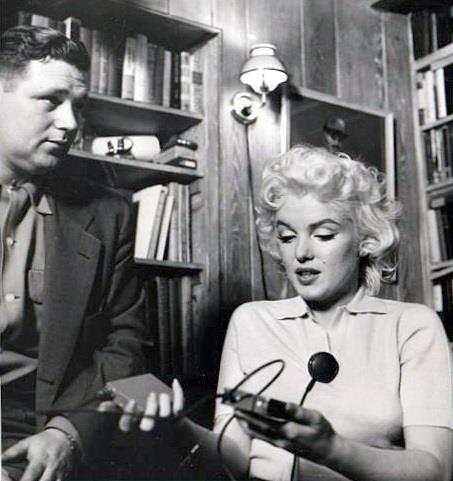

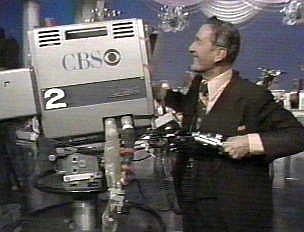

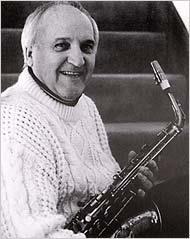

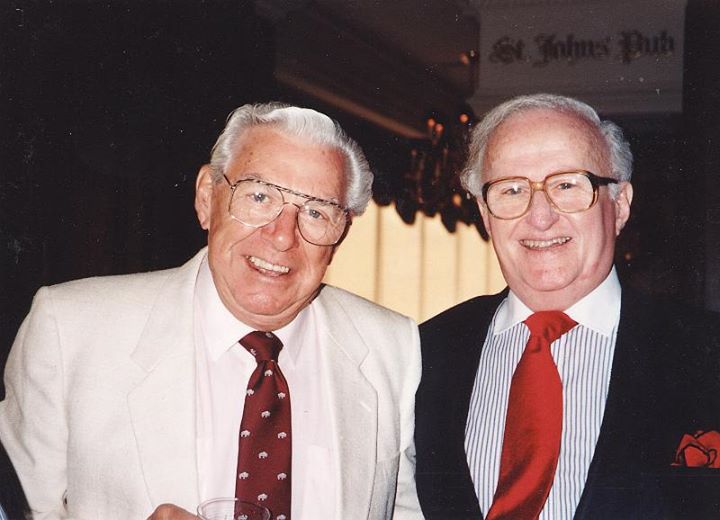

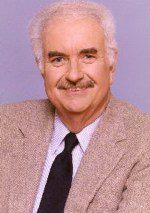

Posts in Category: TV History
Page 113 of 136
« Previous
1
2
3
4
5
6
7
8
9
10
11
12
13
14
15
16
17
18
19
20
21
22
23
24
25
26
27
28
29
30
31
32
33
34
35
36
37
38
39
40
41
42
43
44
45
46
47
48
49
50
51
52
53
54
55
56
57
58
59
60
61
62
63
64
65
66
67
68
69
70
71
72
73
74
75
76
77
78
79
80
81
82
83
84
85
86
87
88
89
90
91
92
93
94
95
96
97
98
99
100
101
102
103
104
105
106
107
108
109
110
111
112
113
114
115
116
117
118
119
120
121
122
123
124
125
126
127
128
129
130
131
132
133
134
135
136
Next » EXTREMELY RARE ‘FRANKENSTEIN’ COLOR FOOTAGE
On May 21, 2013
- TV History
EXTREMELY RARE ‘FRANKENSTEIN’ COLOR FOOTAGE
Sara Karloff shared this, the only known color footage of her father in costume as the Frankenstein monster. It is shot by a crew member with a home movie camera during a makeup test. The man Karloff clowns around with is Makeup Director, Jack Pierce. “The makeup had this greenish tint,” she explained, because “in black and white film, on the screen, it would translate into a deathly gray.”
http://www.youtube.com/watch?feature=player_embedded&v=g3f-zm2jyFo
This is not a “color test” — this is from a reel of 16mm home movies belonging to the Karloff family. There WAS a Technicolor test shot on the film but it’s still hidden in some vault in New Jersey.
A Very Interesting History: The Chaplin Studios
On May 21, 2013
- TV History
A Very Interesting History: The Chaplin Studios
In 1919, construction was completed on the land bought in 1917 by silent screen icon Charlie Chaplin, including his personal residence on the site. Many of Chaplin’s classic films were shot at the studios, including The Kid (1921), The Gold Rush (1925), City Lights (1931), Modern Times (1936), The Great Dictator (1940), Monsieur Verdoux (1947), and Limelight (1952).
In 1953, a New York real estate investor bought the studio from Chaplin, who had left America permanently in October 1952, for $650,000. The new owner had planned to tear down the studio, but it was leased to a television production company and became known as Kling Studios. Starting in 1953, the property went through a succession of owners who used the studios to shoot television series. In 1953, ‘The Adventures of Superman’ television series starring George Reeves was shot there.
Beginning in 1959, Red Skelton shot his television series at the facility, and in April 1960 Skelton purchased the studio. Skelton also purchased three large mobile units for taping color television shows, making a total investment estimated at $3.5 million. Skelton had a large “Skelton Studios” sign erected over the main gate on La Brea Avenue.
Skelton sold the studio to CBS in 1962, and CBS shot the Perry Mason television series there from 1962–1966.
In 1966, Herb Alpert and Jerry Moss purchased the studio from CBS to serve as a headquarters for A&M Records.
In 1985, the hit single and video “We Are the World” was recorded in A&M’s Studio A.
From 1981 to 1985, Soul Train taped at The Chaplin Stage.
In February 2000, Jim Henson’s children purchased the studio for $12.5 million to serve as the new home of The Jim Henson Company. The lot was used in November of 2010, as the set for the abandoned Muppet Studios in ‘The Muppets’ film.
Flying Blind…Can You Imagine?
On May 21, 2013
- TV History
Flying Blind…Can You Imagine?
This is the first ever televised Rose Parade on KTLA in Los Angeles. The date is January 1, 1947 and shows two, brand new RCA TK30s in use without their viewfinders and the RCA meatball logo… more on that below. By the way, notice the logo still says W6XYZ…22 days later, it became KTLA.
The TK30 (and TK10) had just become available in late 1946 and, except for those going to NBC, many TK30s were shipped without their viewfinders. I’m not sure of just what it was, but there was a shortage of some element used in the VF that was difficult to obtain for a few months due to the fact that the military had bought up all of whatever was missing. It was possibly the 7″ CRT tubes they needed for radar.
All the cameramen could do was watch a monitor and take cues from the TD on focus. The saving grace that there still were not many TV sets in use at the time. Within a few months, the VFs were available. Notice in this photo, the RCA logo has been removed…remember, KTLA was owned by Paramount who was also a partner with Dumont!
Zoomar 1
On May 19, 2013
- TV History
Zoomar 1
In early 1947 the Zoomar lenses became available with the Field Zoomar being the first of the three sizes to be offered. It was a 27 element lens designed for outside broadcasts, but the crew at Chicago’s WBKB had a different idea and began using it on a new puppet show which we now know as ‘Kukla, Fran and Ollie’.
Burr Tillstrom was the creator and only puppeteer on the show, which premiered as the hour-long ‘Junior Jamboree’, seen locally on WBKB in Chicago, Illinois, on October 13, 1947. The program was renamed ‘Kukla, Fran and Ollie’ (KFO) and transferred to WNBQ (the predecessor of Chicago’s WMAQ-TV) on November 29, 1948. The first NBC network broadcast of the show took place on January 12, 1949. It aired from 6–6:30 p.m. Central Time, Monday through Friday from Chicago. The use of the Zoomar Filed lens continued from start to finish through the shows migration from WBKB to NBC and the 1954 move to ABC where it ended in 1957.
Zoomar 2
On May 19, 2013
- TV History
Zoomar 2
After seeing the results of the use of the Field Zoomar on NBC’s Kukla, Fran and Ollie, CBS began to use the outdoor lens on some inside productions as well.
Zoomar 3
On May 19, 2013
- TV History
Zoomar 3
This image from the June 1949 issue of American Cinematographer, shows Zoomar lens creator Dr. Frank Back (pointing) with Kukla, Ollie and puppeteer Burr Tilstrom. Zoomar lenses first appeared in 1947. This is the Zoomar Field Lens.


NBC Sports, Behind the Scenes at Players Tournament
On May 18, 2013
- TV History
Re Posting: NBC Sports Video
This was posted Wednesday, but the next day the link went dark so here is a new link. Thanks to John Boeddeker, veteran NBC cameraman, here’s a great look behind the scenes of the 2013 Players Championship. This 7 minute clip includes five of the key cameramen on this 60 camera shoot, including John. Enjoy!
Golf Channel and NBC Sports Offer Unparalleled Players Coverage | Golf Channel
See behind the scenes as Golf Channel and NBC Sports used the latest technologies to bring you the most advanced coverage of any golf tournament to date.
A Genuine Rarity!
On May 16, 2013
- TV History
A Genuine Rarity!
This is the only photo I have ever seen that shows part of the regular ‘Huntley-Brinkley Report’ individual studio sets. All the other “set” photos I’ve seen of them show them together on sets at special events like space shots or political conventions. This is David Brinkley at his WRC-TV Washington desk. Both the floor manager and Brinkley have monitor and clock carts to see the New York feed with Chet Huntley shown in the monitor.
Goodbye Stefon!
On May 15, 2013
- TV History
Goodbye Stefon!
At the end of the season, Bill Hader is leaving SNL after eight years on the show. I love his Stefon character and Hader’s great voice and range. We’ll miss him.
The All Important “Wings”: Studios 33 and 31, TVC
On May 14, 2013
- TV History
The All Important “Wings”: Studios 33 and 31, TVC
The side stage wings of CBS Television City’s Studio 33 and 31 were great ideas that helped greatly in production. The designers wanted to create a theatrical feeling, but needed to accommodate cameras, so the wings were built into their design. Many times, when live set changes were occurring, the action would move to the wings for simple transition scenes. This was a dream job too!
CBS Television City: Original Configuration Of Studio 33
On May 14, 2013
- TV History
CBS Television City: Original Configuration Of Studio 33
When Television City was first built, the center camera ramps went all the way to the control room in both 33 and 31. The ramp actually has a T shape to it, as there is room for cameras on each side of the ramp at the control room. Over the years, this has disappeared and reappeared several times in various forms. Today, the ramp is gone and curtains cover the whole back wall.
Did You Know? Lorne Green & Michael Landon…
On May 11, 2013
- TV History
Did You Know? Lorne Green & Michael Landon
Lorne Green: He is the original inventor of the count-down clock and his patent was the source of some of his personal wealth. He founded Toronto’s Academy of Radio Arts and was commemorated on a stamp in Canada. He was invited to play Ben Cartwright after a well-received performance as Big Brother in a CBS production of ‘1984’ on ‘Studio One in Hollywood’.
Michael Landon: He and Johnny Carson were best friends. In 1954, he was the top high school javelin thrower and set records as USC, Los Angeles. He lost the starring role of Dobie Gillis to Dwayne Hickman in a close decision, but beat Robert Blake and Robert Fuller in the competition for the role of Little Joe.
NBC’s ‘All Star Review’: 1950-1953
On May 11, 2013
- TV History
NBC’s ‘All Star Review’: 1950-1953
This show began as ‘The Four Star Review’ and later became ‘The Martha Raye Show’. When it started, this weekly variety show was hosted on a rotating basis by Jimmy Durante, Ed Wynn, Jack Carter and newcomer Danny Thomas, thus the “four star” name. In 1951, other hosts were added including Tallulah Bankhead, George Jessel, Jackie Gleason and Martha Raye and was renamed “all star”. The one hour show cost a whopping $60,000 per episode and originated in the Center Theater in NYC which seated 3,500 people. In late ’52, the west coast was connected to east coast and production rotated weekly between NYC and Los Angeles. In the last couple of years of the show, Raye, with the help of Nat Hiken and later Norman Lear became a bigger part of the show and it morphed into ‘The Martha Raye Show’ and ran from ’54-’56. Below is a shot from the New York rehearsal with Raye as host.
‘Hallmark Hall Of Fame’ NBC Brooklyn
On May 9, 2013
- TV History
‘Hallmark Hall Of Fame’ NBC Brooklyn
This is from ‘The Hallmark Hall of Fame’ presentation of ‘Eagle In A Cage’. The actors pictured are Trevor Howard and Pamela Franklin. The photo was taken in the Brooklyn studios in 1965. The series started in December of 1951 and was done at NBC Hollywood as Burbank did not open till September of ’52, but moved there as soon as the paint dried. The show went color in 1954 and was done live till 1960 when it went to video tape. The first four seasons, the show aired weekly but beginning with the ’55-’56 season, the series went to a schedule of 5 to 7 specials a year, usually airing around holidays. I suspect production moved to Brooklyn in 1960 and stayed there till ’66 when it moved back to Burbank. Any one have and information on this?
The Shure ‘Vagabond’ #1
On May 8, 2013
- TV History
The Shure ‘Vagabond’ #1
This is from the 1953 Shure Brothers catalog and show the first wireless mic. In ’53, the Vagabond 88 cost $700…in today’s dollars, that’s over $6000.
The Shure ‘Vagabond’ #2
On May 8, 2013
- TV History
The Shure ‘Vagabond’ #2
Below, Marilyn Monroe is introduced to the first wireless mic at CBS in 1954. She is actually holding two body transmitters with the one on the right connected to a black mic (pinned to her sweater) that is also a ‘hands free’ version. As you see in the next post, it can be used with a ‘hidden’ mic or a hand held, cable fee mic. My guess is that she is being shown both and given a choice on which one she would like to use.
Confused? I was too…
On May 8, 2013
- TV History
Confused? I was too…
Having been a staple of ABC for so long, I was a bit confused when I first saw this photo but the fact is, Welk did record the syndicated show for two seasons from Television City.
The Lawrence Welk Show started in 1951 as a local program on KTLA-TV in Los Angeles. The original show was broadcast from the since-demolished Aragon Ballroom at Venice Beach. The show made its national TV debut on July 2, 1955, and was initially produced at the Hollywood Palladium, moving to the ABC studios at Prospect and Talmadge in Hollywood shortly afterwards. For 23 of its 27 years on the air, the show would originate there. The only seasons not produced there were 1965–66, 1976–77 at the Hollywood Palace and CBS Television City from 1977 to 1979.
Clarabell #3, Lew Anderson
On May 5, 2013
- TV History
Clarabell #3, Lew Anderson
This is the man most of us remember as Clarabell. Lew took over the roll in 1954 and was the one that delivered the famous “Good bye kids” line on the last show in 1960. Although Howdy Doody had been on since 1947, most of us never saw the show till 1956 when NBC aired it nationwide on Saturday mornings from 10-10:30 eastern. Bob Smith called Lew the best Clarabell. Anderson was a noted jazz musician and his big band (he was the leader) played often at the legendary Birdland nightclub in Manhattan.
Clarabell #2, Robert ‘Nick’ Nicholson
On May 5, 2013
- TV History
Clarabell #2, Robert ‘Nick’ Nicholson
This is Buffalo Bob Smith with Nick Nicholson in the 1980s. Nick had been with the show since early on because he was the voice of Cornelius J. Cobb. When Keeshan left in 1952, Nick stepped in as Clarabell for two years. Interestingly, he and his successor were also jazz musicians.
Clarabell #1, Bob Keeshan
On May 5, 2013
- TV History
Clarabell #1, Bob Keeshan
As we all know, Keeshan later became Captain Kangaroo, but few knew that he was a decorated marine in WWII. Keeshan met Bob Smith at NBC radio where he was a page and came with Smith as a page/assistant to the Howdy Doody Show and wore his NBC page blazer as a silent assistant on the show handing out prizes and helping. Since the original show had Buffalo Bob dressed as a ringmaster in a circus themed set, it was a natural step to include Keeshan as a ‘silent partner’ and dress him in clown makeup. Bob Keeshan was with the show from it’s start in 1947 till 1952 when he left over a salary dispute.
Page 113 of 136
« Previous
1
2
3
4
5
6
7
8
9
10
11
12
13
14
15
16
17
18
19
20
21
22
23
24
25
26
27
28
29
30
31
32
33
34
35
36
37
38
39
40
41
42
43
44
45
46
47
48
49
50
51
52
53
54
55
56
57
58
59
60
61
62
63
64
65
66
67
68
69
70
71
72
73
74
75
76
77
78
79
80
81
82
83
84
85
86
87
88
89
90
91
92
93
94
95
96
97
98
99
100
101
102
103
104
105
106
107
108
109
110
111
112
113
114
115
116
117
118
119
120
121
122
123
124
125
126
127
128
129
130
131
132
133
134
135
136
Next »